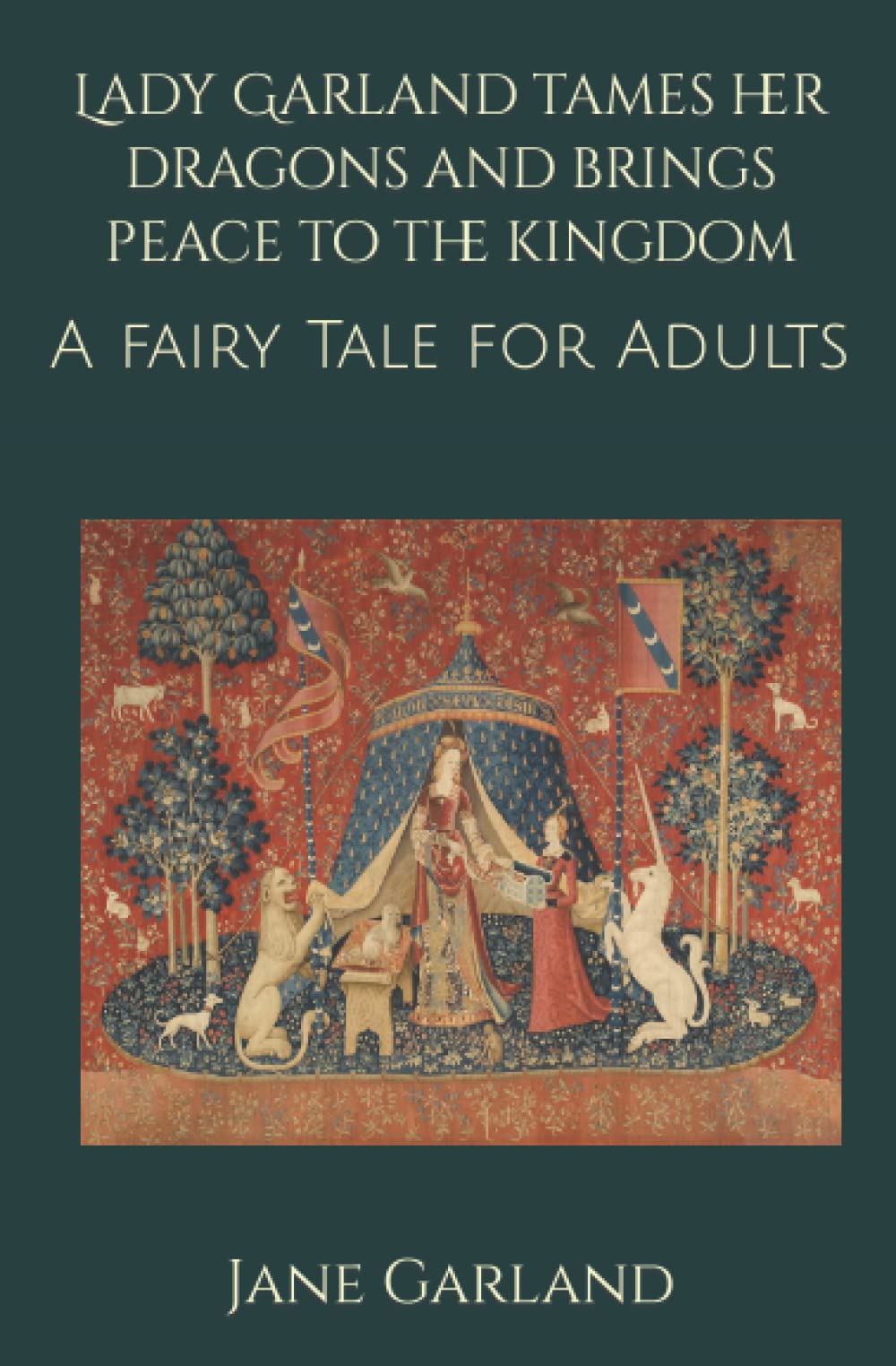A self-described “caricature of privileged white female,” professor Jane Garland is still subject to the intense societal pressures afflicting women of any race or class. Despite having plenty and remaining highly functional, she still battles anxiety and depression. When her husband suffers a medical emergency, her daughter develops a baffling eating disorder, and COVID dismembers the structure of her life, Garland takes a year off of work to analyze herself and create a plan to ensure the next phase of her life looks different from the last.
LADY GARLAND TAMES HER DRAGONS AND BRINGS PEACE TO THE KINGDOM is an ambitious project. Within the text itself, the project is explicitly ambiguously positioned between fiction and nonfiction, with a shrug that lands on “fairy tale.” It has novelistic aspects, and is something of a memoir – it’s evidently based on the author’s actual experience – but shares much in common with the self-help or personal development genres (the “Acknowledgments” section is densely populated with life coaches). LADY GARLAND is clear about a few important things: it has a voice (confident, self-assured, cynical, manic; deliberately reflective of an anxious narrator largely trapped in their own head); it has intent (save the world, fairly honestly; at an immediate level, self-actualization); and it has an argument or framework (a number of truths cribbed from various life coaches or self-help systems, essentially boiling down to “start now, don’t be afraid to fail, keep going”). These are the book’s greatest strengths – clarity of purpose and the narrative that pursues it.
That said, the execution can be uneven. While the prose is always solid and the arguments more or less hold together, large structural problems dog the text. The “fairy tale” conceit ends up having very little to do with the book, which has much more in common with other self-help books. Despite being up-front about its narrator’s position of privilege, the text seems blind to numerous practical effects of that privilege (aspects of the gender dynamic between Garland and her husband go strangely unexamined; there’s a running thread of surprisingly honest faith in capitalism). LADY GARLAND oscillates between focusing on systemic issues and individual ones, ultimately toeing the trap into which most self-help literature falls: arguing too strenuously that individual action, as opposed to collective action, will effect substantive change (the narrator’s strategy, writ large, is to individually accrue wealth through capital investment before individually performing meritorious actions). Underlying this is a privileged view which, despite being acknowledged, still seeps into the book’s arguments. There’s no question that the narrator’s own year of self-reflection and subsequent shift in life strategies were valuable for her, but it’s unclear whether they teach any lessons which are applicable to society at large, or will accomplish what she wants them to. For readers already enthusiastic about personal development or sharing some of the same frustrations with and qualms about their privilege, this may offer one among many options for re-strategizing an individual life (or may point them to new resources cited in the text). But in spite of its lofty goals, LADY GARLAND has little to say to individuals focused on solving the systemic problems – gender inequality, climate change, etc. – which it knows we need to solve.
LADY GARLAND TAMES HER DRAGONS AND BRINGS PEACE TO THE KINGDOM has confident prose and lots of heart, but its rapidly-shifting focus and loose overall structure may prevent it from either entertaining or persuading a reader.
~Dan Accardi for IndieReader


